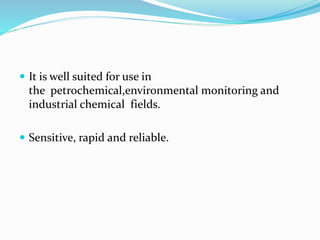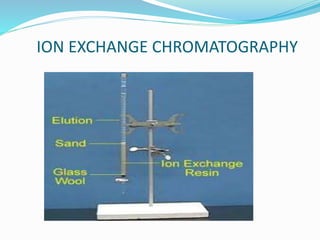Chromatography is a technique used to separate mixtures by exploiting differences in how components interact with two phases - a stationary phase and a mobile phase. Components travel through the mobile phase at different rates depending on how they partition between the mobile and stationary phases, allowing separation. Chromatography techniques include paper chromatography, thin layer chromatography, gas chromatography, liquid chromatography, and others which differ based on the specific phases used. Chromatography is widely applied in science for analytical purposes such as separating chemical compounds.





























![AFFINITY CHROMATOGRAPHY
Affinity chromatography[6] is based on selective non-
covalent interaction between an analyte and specific
molecules, referred to as ligands.
The immobilized ligands act as molecular fish-hooks
& selectively pick up desired proteins while the
remaining protein pass through the column.](https://image.slidesharecdn.com/chromatography-130817104003-phpapp02-201029065202/85/Chromatography-30-320.jpg)




